Illusion of lightness #4
since January 11, 2008
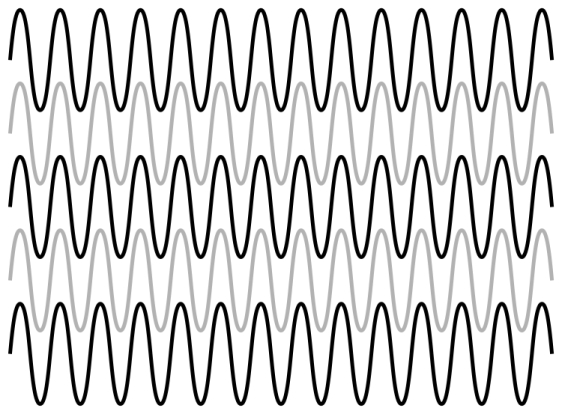
"Wave-line brightness illusion"
(Sohmiya, 2006)
The white background behind the gray waves appears to be darker than the rest. This effect was discovered by Seiyu Sohmiya in 2006 (personal communication).
produced by Akiyoshi Kitaoka 2009 (February 19)
"Wave-line color illusion"
(Sohmiya, S. (2007) A wave-line colour illusion. Perception, 36, 1396-1398)
The white background behind the orange waves appears to be tinted orange.
produced by Akiyoshi Kitaoka 2009 (February 19)
"Inkzet"
Cyan, magenta and yellow rings appear to shed light and include Mach bands.
Copyright Akiyoshi Kitaoka 2009 (January 19, 23)
"Mach rings"
Mach bands give illusory convex or concave rings. The rings of luminance gradient appear to be convex while those of homogeneous luminance appear to be concave. This idea was given by Zen Tobinaka.
Copyright Akiyoshi Kitaoka 2009 (January 19, 23)
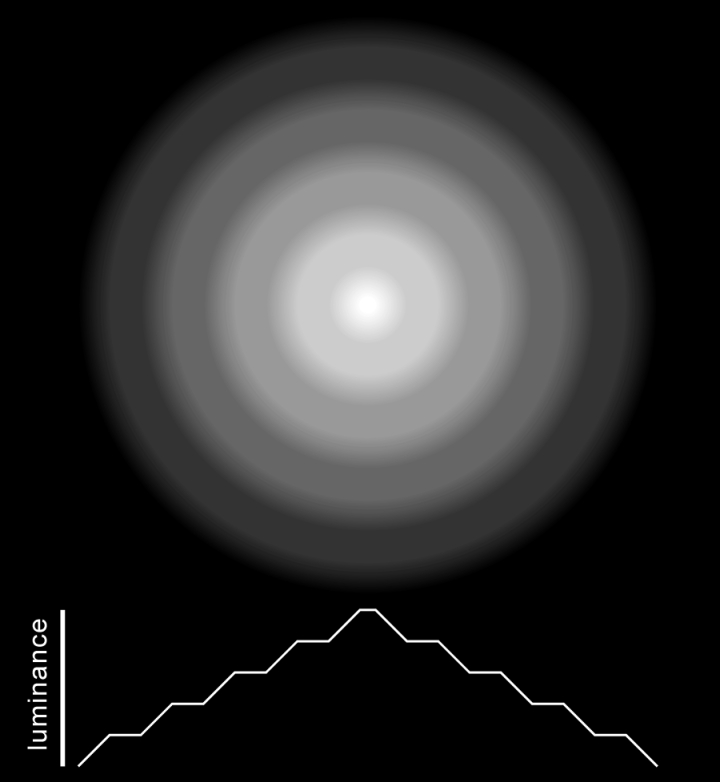
"Craik-O'Brien-Cornsweet effect-dependent radiation perspective and an angel"
There are six pie slices; three of them appear to be darker than the rest, though they are the same in luminance except around their borders.
Copyright Akiyoshi Kitaoka 2008 (October 21)

Craik-O'Brien-Cornsweet effect: There appear two dark columns in front
of the light background, though they are the same in luminance except around
their contours.
(Cornsweet, 1970; Craik, 1966; O'Brien, 1958)
Cornsweet, T. (1970) Visual Perception. New York: Academic Press.
Craik, K. J. W. (1966) The Nature of Psychology: a Selection of Papers, Essays and Other Writings. Cambridge, UK: Cambridge University Press.
O'Brien, V. (1958) Contour perception, illusion and reality. Journal of the Optical Society of America, 48, 112-119.
"Realistic obake"*
*Obake = phantom
The clothes of the left phantom appears to be lighter than those of the right one, though they are the same luminance.
Copyright Akiyoshi Kitaoka 2008 (August 14)
"Obake"*
*Obake = phantom
The clothes of the left phantom appears to be lighter than those of the right one, though they are the same luminance.
Copyright Akiyoshi Kitaoka 2008 (July 21; modified August 3)
"Radio wave stones"
An illusory grating appears at each gap between adjacent stones .
Copyright Akiyoshi Kitaoka 2008 (June 21)
"Hole-induced lightness induction"
A surface having holes on it appears to be lighter than it is.
Copyright Akiyoshi Kitaoka 2008 (June 16)
Bulges also work.
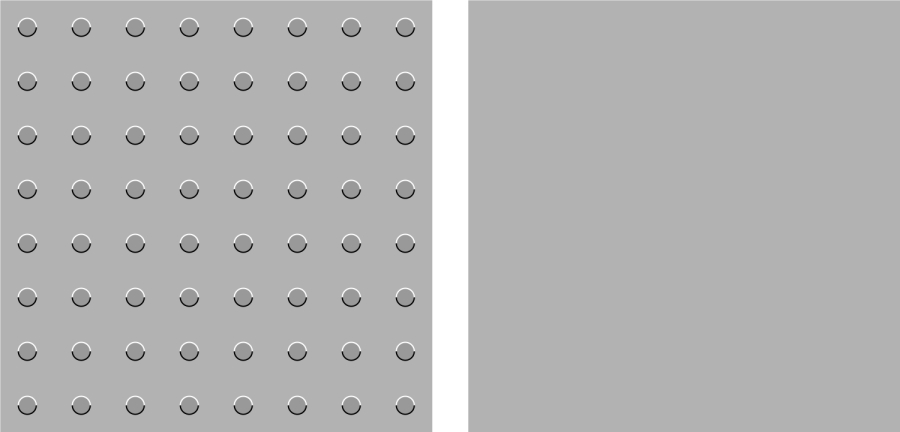
"Enhanced grating induction"
The horizontally-drawn thin occluder appears to have a luminance modulation, dark-light-dark-light-dark, but this appearance is the reversal of the physical property. Actually, the thin line has a luminance grating, light-dark-light-dark-light. This fact can be confirmed by placing the cursor on the image. I suggest that this illusion be an enhanced version of grating induction (McCourt, 1982). Moreover, this illusion might be the fundamental component of the Mimas-and-the-F-ring illusion.
Copyright Akiyoshi Kitaoka 2008 (January 11)
 Grating induction (McCourt, 1982)
Grating induction (McCourt, 1982)
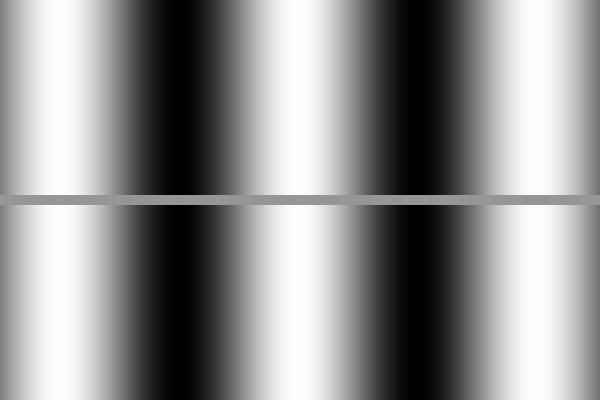
The horizontally-drawn thin occluder appears to have a luminance modulation, dark-light-dark-light-dark, but it is a brightness/lightness illusion. Actually, the thin line is homogeneously gray. This fact can be confirmed by placing the cursor on the image.
McCourt M E, 1982 “A spatial frequency dependent grating-induction effect” Vision Research 22 119-134
 Mimas-and-the-F-ring illusion (Lakdawalla, 2008)
Mimas-and-the-F-ring illusion (Lakdawalla, 2008)
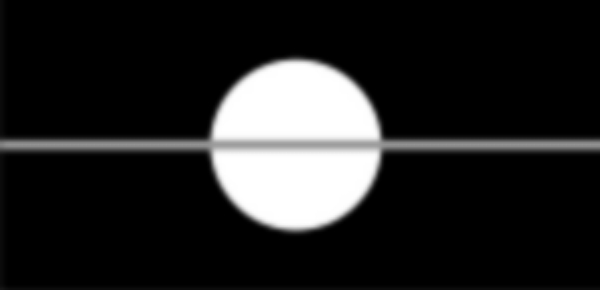
(This image is not the original photo but a graphic work drawn by Akiyoshi Kitaoka)
The horizontally-drawn thin occluder (the F ring of Saturn) appears to have a luminance modulation, light-dark-light, but this appearance is the reversal of the physical property. Actually, the thin line has a luminance grating, dark-light-dark. This fact can be confirmed by placing the cursor on the image
Jan. 2, 2008 | 11:37 PST | 19:37 UTC
 Grating induction in the "F ring in front of Mimas"
Grating induction in the "F ring in front of Mimas"
The horizontally-drawn thin occluder appears to have a luminance modulation, light-dark-light, but it is a brightness/lightness illusion. Actually, the thin line is homogeneously gray. This fact can be confirmed by placing the cursor on the image.
 Another display of counterphase brightness induction
Another display of counterphase brightness induction

The left bar is the same luminance as the right one in each row, but the left one appears to be darker than the right.
Akiyoshi Kitaoka Deceived eyes: How to enjoy visual illusions
(in Japanese; published in January 2007) ![]()